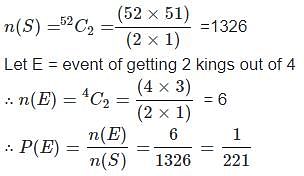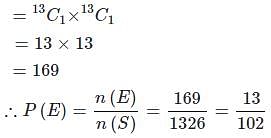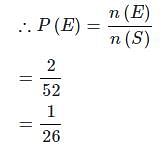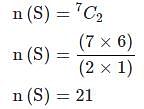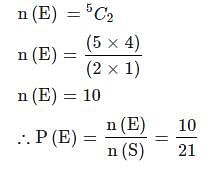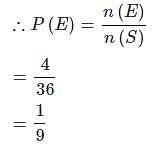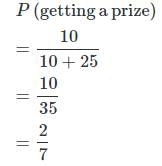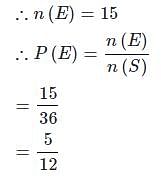Test: Probability Theory - 1 - SSC CGL MCQ
10 Questions MCQ Test - Test: Probability Theory - 1
In a simultaneous throw of two coins, the probability of getting at least one head is-
From a pack of 52 cards, two cards are drawn together at random. What is the probability of both the cards being kings?
| 1 Crore+ students have signed up on EduRev. Have you? Download the App |
A bag contains 6 black and 8 white balls. One ball is drawn at random. What is the probability that the ball drawn is white?
Two cards are drawn together from a pack of 52 cards. The probability that one is a spade and one is a heart, is:
A card is drawn from a pack of 52 cards. The probability of getting a queen of club or a king of heart is:
A bag contains 2 red, 3 green and 2 blue balls. Two balls are drawn at random. What is the probability that none of the balls drawn is blue?
What is the probability of getting a sum 9 from two throws of a dice?
Two dice are thrown simultaneously. What is the probability of getting two numbers whose product is even?
In a lottery, there are 10 prizes and 25 blanks. A lottery is drawn at random. What is the probability of getting a prize?
Two dice are tossed. The probability that the total score is a prime number is:



